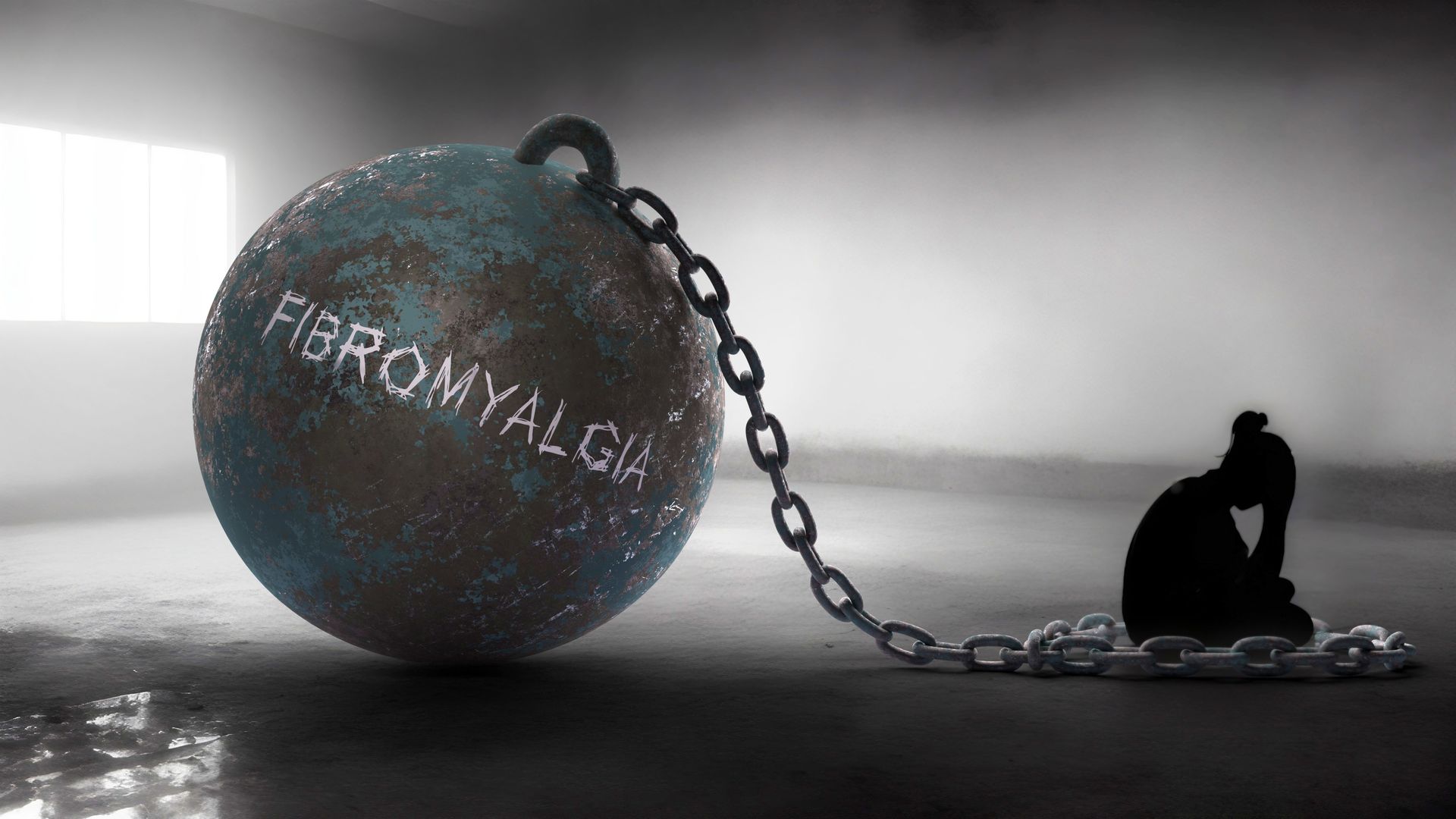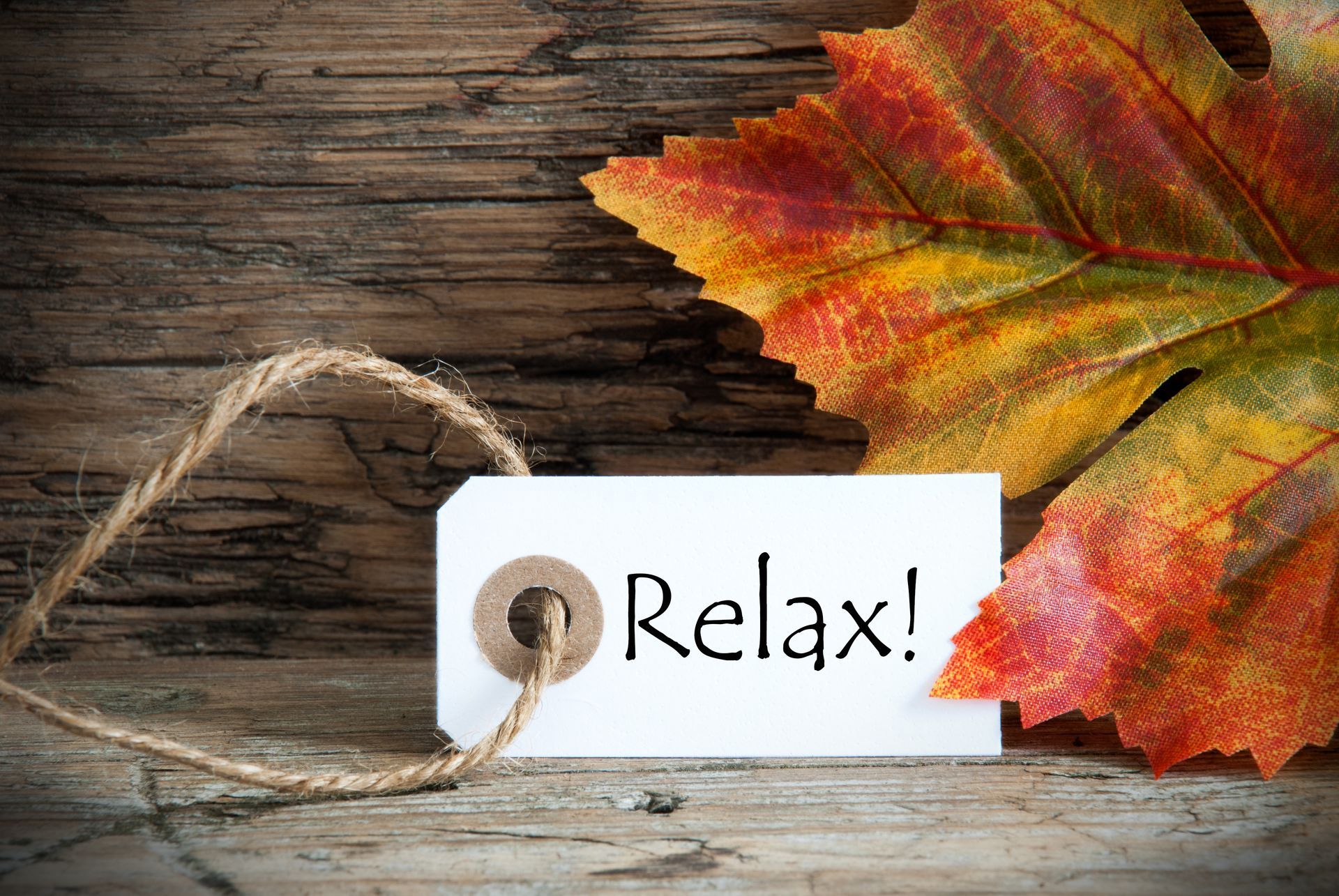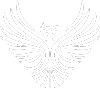Blog

When the temperature drops, many people notice a familiar ache: stiff joints, tight muscles, and less motivation to move. Winter can be beautiful, but cold weather often brings increased discomfort—especially if you already live with chronic pain, arthritis, or post-surgical recovery challenges. At Medical Massage Pensacola , we specialize in helping you stay mobile, flexible, and pain-free all year long. Here’s why massage therapy is one of the best remedies for cold weather stiffness—and how it can keep you moving with ease this winter. Why Cold Weather Makes Muscles and Joints Stiff When the body is exposed to lower temperatures, blood vessels constrict to preserve heat. While this is a natural survival response, it also means less oxygen and circulation reach your muscles and connective tissues. The result? Increased stiffness in joints Reduced flexibility and range of motion More frequent muscle spasms or cramps Slower recovery from daily strain For people with arthritis, fibromyalgia, or old injuries, these effects can feel even more pronounced during colder months. The Benefits of Pensacola Massage Therapy in Winter Massage does more than relax the body—it actively combats the effects of cold weather on your musculoskeletal system. Here’s how: 1. Improves Circulation and Warmth Massage stimulates blood flow, increasing oxygen and nutrient delivery to muscles. This helps warm stiff tissues and keeps joints lubricated for easier movement. 2. Reduces Muscle Tension and Pain Cold weather often leads to unconscious tensing of muscles, which can trigger pain and discomfort. Massage loosens knots and eases chronic tightness so your body can move freely again. 3. Supports Injury Recovery If you’re recovering from surgery, a sports injury, or repetitive strain, winter can feel like a setback. Therapeutic massage reduces inflammation, promotes healing, and prevents scar tissue buildup—helping you stay on track. 4. Boosts Flexibility and Range of Motion Regular sessions improve joint mobility and keep muscles supple, which is essential if you want to stay active in the colder months without added strain. 5. Enhances Stress Relief and Immunity Winter stress, holiday fatigue, and seasonal immune challenges are all common. Massage lowers cortisol levels and encourages relaxation, which in turn supports a stronger immune system. Best Types of Massage for Winter Stiffness At Medical Massage Pensacola , our team offers a range of therapies tailored to cold weather needs, including: Medical Massage – for chronic pain, injuries, and post-surgical care. Lymphatic Drainage - for post-surgical care, swelling and immune support. Deep Tissue Massage – to relieve persistent tension and improve mobility. Myofascial Cupping Therapy – to improve circulation and release fascia restrictions. Sports Massage – to keep athletes flexible and resilient during the off-season. Reiki/Relaxation Massage – to balance energy and reduce stress. Keep Moving This Winter in Pensacola Even in Florida, where winters are milder than up north, cooler days can still leave you feeling stiff and sluggish. Whether you’re managing arthritis, recovering from surgery, or just want to feel more energized, massage therapy can help you stay active and pain-free all season long. At Medical Massage Pensacola , our licensed therapists specialize in evidence-based massage treatments that not only relieve pain but also promote long-term healing. Book Your Winter Massage Today Don’t let cold weather slow you down. Schedule your next session at Medical Massage Pensacola and give your body the care it deserves. Book Your Appointment Now Stay warm, stay flexible, and keep moving with confidence this winter.

Car accidents can leave more than just dents in vehicles—they often leave lingering pain, stiffness, and stress in the body. Whether it’s whiplash, muscle strain, or chronic tension, recovery can feel overwhelming. Fortunately, massage therapy has proven to be a safe, effective, and natural way to support healing after an auto accident. At Medical Massage Pensacola , we specialize in helping clients restore mobility, reduce pain, and speed up recovery with therapeutic massage. Here’s how massage can play a vital role in your post-accident healing journey. 1. Pain Relief Without Heavy Medication After a collision, many people experience neck pain, back pain, or headaches due to whiplash or muscle strain. Massage therapy helps relieve pain naturally by improving circulation, reducing muscle tightness, and releasing endorphins—the body’s natural painkillers. Unlike prescription medications, massage offers a non-invasive approach with lasting benefits, making it a smart choice for those seeking relief without heavy reliance on drugs. 2. Reducing Inflammation and Swelling Auto accidents often cause soft tissue injuries like micro-tears in muscles and ligaments. This can lead to inflammation, bruising, and swelling. Specialized techniques such as myofascial release and lymphatic drainage massage encourage the body to eliminate excess fluids and toxins, accelerating the healing process. When inflammation is reduced, mobility improves—and recovery time shortens. 3. Restoring Mobility and Flexibility Tight, damaged muscles can restrict movement long after an accident. Massage helps increase blood flow and break down scar tissue , allowing muscles to regain flexibility and joints to move more freely. Patients often notice improved posture, less stiffness, and a greater range of motion after consistent massage sessions, making daily activities and physical therapy easier. 4. Supporting Emotional Recovery Physical pain isn’t the only challenge after an auto accident—many people experience anxiety, stress, or even trauma from the event. Massage therapy promotes deep relaxation by lowering cortisol levels and encouraging a parasympathetic “rest and digest” state. This helps patients not only recover physically but also feel calmer and more grounded during the healing process. 5. Long-Term Recovery and Prevention Massage isn’t just about short-term relief. Regular sessions can help: Prevent chronic pain from developing Reduce the risk of long-term mobility issues Support better sleep and faster overall recovery By addressing both the physical and emotional impacts of a car accident, massage therapy provides a holistic approach to healing . Why Choose Medical Massage Pensacola? Our therapists specialize in post-accident medical massage , working in alignment with physician recommendations to ensure safe and effective care. Whether you’re dealing with whiplash, muscle pain, or stress after a collision, we customize each session to your unique needs. We understand the road to recovery isn’t always easy—but you don’t have to walk it alone. Book Your Auto Accident Recovery Massage in Pensacola Today If you’ve been in a car accident, don’t wait for pain to take control of your life. Massage therapy can help you recover faster, reduce discomfort, and restore your quality of life. Call Medical Massage Pensacola today to schedule your auto accident recovery massage and take the first step toward healing.

Chronic pain affects thousands of people across the Gulf Coast, and Pensacola residents are increasingly seeking medical massage therapy as a safe, effective alternative to relying solely on pain medications or invasive procedures. At Medical Massage Pensacola, we specialize in helping clients relieve pain, restore mobility, and improve quality of life with customized treatments that go far beyond a traditional spa massage. What Makes Pensacola Medical Massage Different? Unlike a relaxation or spa massage, medical massage is focused on addressing specific health concerns, often with guidance from physicians. Each session is tailored to the individual’s condition, whether it’s post-surgical recovery, chronic back pain, migraines, TMJ dysfunction, or sports injuries. By using advanced techniques such as myofascial release, cupping therapy, and targeted deep tissue work, medical massage helps break up scar tissue, improve circulation, and reduce inflammation. This results in long-term relief , not just temporary relaxation. Why Pensacola Residents Are Turning to Medical Massage Pensacola has a strong community of active individuals—military personnel, athletes, healthcare workers, and busy professionals—who often experience pain from repetitive stress, injuries, or physically demanding jobs. More and more locals are choosing medical massage because it offers: Drug-Free Pain Relief – A natural way to manage pain without heavy reliance on prescription medications. Improved Mobility & Recovery – Faster healing after surgery, accidents, or sports injuries. Personalized Care – Treatments designed around each patient’s medical history and doctor’s recommendations. Stress & Pain Connection – Relief that addresses both physical and emotional tension, which often go hand-in-hand. Common Conditions Treated with Medical Massage At Medical Massage Pensacola, our licensed therapists regularly see patients referred by doctors for conditions such as: Sciatica and lower back pain Post-surgical scar tissue restrictions TMJ pain and headaches Sports-related muscle injuries Neck and shoulder tension from desk work Prenatal and postpartum pain management These evidence-based techniques help patients restore balance, improve posture, and reduce dependency on pain medications. The Local Choice for Pain Relief in Pensacola Pensacola residents are prioritizing their health and seeking care that works with their body, not against it. Choosing medical massage means choosing a holistic, physician-recommended, results-driven approach to healing. At Medical Massage Pensacola, our team of experienced therapists works alongside doctors’ treatment plans to ensure clients receive care that’s both effective and safe. Whether you’re recovering from surgery, dealing with chronic pain, or simply looking to restore your body’s natural balance, medical massage may be the missing piece in your health journey. Ready to Experience Pain Relief That Lasts? If you live in Pensacola and are struggling with pain, it’s time to explore the benefits of medical massage. Book your appointment today and discover why so many Gulf Coast residents are making the switch. Schedule your session now at Medical Massage Pensacola and take the first step toward lasting relief.

Veterans carry unique burdens. Years of service can take a serious toll on the body and mind, often leaving lasting effects such as chronic pain, post-traumatic stress disorder (PTSD), and difficulty adjusting to civilian life. While traditional medical care is essential, many veterans are now turning to complementary therapies like medical massage to find relief, restore balance, and reclaim their quality of life. At Medical Massage Pensacola , we specialize in working alongside doctors’ recommendations to help veterans manage pain, improve mobility, and reduce stress. Let’s explore how massage therapy can support veterans on their healing journey. Why Massage Therapy Matters for Veterans Military service often involves repetitive strain, heavy gear, injuries, and high-stress environments . Even long after retirement, veterans may experience: Chronic back, neck, and shoulder pain Limited range of motion due to scar tissue or past injuries Migraines and tension headaches Anxiety, hypervigilance, or insomnia from PTSD Massage therapy offers a safe, non-invasive option that addresses both the physical and emotional impacts of military life. Massage for Chronic Pain Relief Chronic pain is one of the most common challenges veterans face. Prescription medications may provide temporary relief, but they often come with side effects or risk of dependency. Massage therapy works differently: Reduces muscle tension and alleviates pain from old injuries Improves circulation , helping the body heal at a cellular level Increases flexibility and mobility , supporting daily activities Releases scar tissue and adhesions , restoring smoother movement Studies show that massage can significantly reduce pain intensity, making it easier for veterans to enjoy active, fulfilling lives. Massage and PTSD: Restoring Calm to the Nervous System PTSD can be overwhelming—flashbacks, anxiety, sleep problems, and emotional numbness can affect daily functioning. Massage therapy may help by: Activating the parasympathetic nervous system , lowering heart rate and blood pressure Encouraging deeper sleep , essential for mental health recovery Releasing endorphins , which naturally elevate mood and reduce stress Restoring body awareness , helping veterans reconnect with a sense of safety While massage is not a replacement for therapy or medical treatment, it’s a powerful complement that supports overall emotional resilience. The Whole-Body Benefits of Pensacola Massage for Veterans Beyond pain and PTSD relief, regular massage can: Boost immune function Improve digestion by reducing stress hormones Promote faster recovery after surgeries or physical therapy Support overall mental clarity and focus For veterans seeking a more natural, integrative approach to health, massage bridges the gap between physical recovery and emotional well-being. Why Choose Medical Massage Pensacola At Medical Massage Pensacola , our licensed therapists are trained in medical massage, post-surgical recovery, and chronic pain management . We provide customized care plans tailored to veterans’ needs, always respecting the connection between mind, body, and service history. We believe healing is not one-size-fits-all. That’s why we collaborate with physicians’ recommendations and create a safe, welcoming space for every veteran who walks through our doors. Ready to Experience Relief? If you or a loved one is a veteran struggling with chronic pain or PTSD, massage therapy may provide the breakthrough you’ve been searching for. Book an appointment today at Medical Massage Pensacola and take the first step toward feeling better, moving easier, and living with greater peace of mind.

In today’s fast-paced world, stress is one of the leading factors impacting health, happiness, and productivity. Whether it comes from work, relationships, or daily responsibilities, finding effective ways to manage stress is essential. Two of the most popular natural solutions are massage therapy and meditation —but which one works best for stress relief? At Medical Massage Pensacola , we specialize in stress reduction through therapeutic massage, but we also recognize the powerful role meditation plays in mental well-being. Let’s compare the benefits of both so you can decide which is right for you—or if a combination might be the ultimate answer. The Science of Stress: Why Relief Matters When the body is under stress, it releases cortisol, the “fight or flight” hormone. While this response is helpful in emergencies, chronic stress keeps cortisol levels elevated, leading to: Muscle tension and pain Headaches and fatigue Poor sleep quality Anxiety and irritability Increased risk of chronic illness This is why stress relief isn’t just about feeling better—it’s about protecting your long-term health. Pensacola Massage for Stress Relief : Relaxation You Can Feel Massage therapy is one of the fastest ways to reduce physical symptoms of stress. By working directly with the muscles and nervous system, massage provides: Lower cortisol levels – Studies show massage can reduce stress hormones by up to 30%. Increased serotonin and dopamine – Natural mood-boosting chemicals that promote calmness and happiness. Pain and tension relief – Loosens tight muscles often caused by stress. Improved sleep – Many clients report deeper, more restful sleep after massage. Massage works best if your stress shows up physically—through neck and shoulder pain, headaches, TMJ tension, or muscle stiffness. Meditation for Stress Relief: Training the Mind Meditation, on the other hand, focuses on calming the mind and reprogramming thought patterns that contribute to stress. Benefits include: Reduced anxiety – Mindfulness meditation has been shown to decrease symptoms of anxiety and depression. Better focus and clarity – Regular practice sharpens mental clarity and improves emotional regulation. Lower blood pressure – Helps reduce the physiological impact of chronic stress. Portable and cost-free – You can practice anywhere, anytime. Meditation works best if your stress feels mental or emotional—such as racing thoughts, overwhelm, or irritability. Massage vs. Meditation: Which One Is Best? So, should you book a massage or start a meditation practice? The answer depends on your stress triggers: Physical stress (muscle pain, tension, poor sleep): Massage may provide quicker relief. Mental stress (worry, overthinking, anxiety): Meditation can help reframe and calm the mind. Chronic or severe stress: A combination of both may be the most effective long-term solution. At Medical Massage Pensacola , we often recommend starting with massage to relax the body and then incorporating meditation into your daily routine for ongoing mental resilience. The Best Stress Relief Strategy? Combine Both. Think of massage as hitting the “reset button” for your body, while meditation helps maintain a calmer state of mind between sessions. Together, they create a powerful stress-management system that improves both body and mind. For example, many of our clients at Medical Massage Pensacola use massage therapy to relieve tension headaches and pair it with a short daily meditation practice to keep stress levels balanced. This combination delivers both immediate relief and long-term wellness. Final Thoughts: Finding Your Balance There’s no one-size-fits-all answer to stress management. The best approach is the one that fits your lifestyle, preferences, and unique stress patterns. If you’re curious about how massage can help you manage stress more effectively, we invite you to schedule a session with our experienced medical massage therapists in Pensacola. Ready to reduce your stress? Book your massage appointment today .

As the crisp air rolls in and pumpkin spice lattes start appearing on every menu, many of us naturally shift into fall mode. Cozy sweaters, warm drinks, and autumn rituals take center stage. But there’s one seasonal essential you might be overlooking: massage therapy . Fall isn’t just about comfort food and seasonal candles—it’s also the perfect time to prioritize your health and wellness. At Medical Massage Pensacola, we believe massage should be part of your fall self-care plan, right alongside your favorite fall traditions. Why Fall is the Perfect Season for Pensacola Massage The transition from summer to fall can bring unique challenges to the body and mind: Colder temperatures can cause muscles to tighten, leading to stiffness and discomfort. Seasonal stress ramps up as the holidays approach, increasing tension and anxiety. Immune systems may become more vulnerable with the change in weather. Massage therapy addresses all of these seasonal shifts, helping you feel grounded, resilient, and pain-free throughout autumn. Stress Relief That Pairs with Pumpkin Spice Pumpkin spice may warm your soul, but massage therapy goes deeper—literally. A therapeutic massage helps reduce cortisol (your stress hormone) and increases serotonin and dopamine, leaving you with a sense of calm and happiness that lasts long after your session. Instead of just reaching for another latte, pair your seasonal indulgence with a massage to melt away stress and restore balance. Pain Relief for Seasonal Changes Cooler weather can exacerbate chronic pain, arthritis, or post-surgical sensitivity. Medical massage is particularly effective at: Reducing inflammation Easing joint stiffness Relieving muscle tension caused by colder temperatures Supporting post-surgical healing and recovery Whether you’re training for a fall race, preparing for a busy holiday season, or just dealing with everyday aches, massage offers lasting pain relief. Boost Your Immune System Before Flu Season in Pensacola Fall is also the start of flu season, and your immune system needs all the help it can get. Massage therapy has been shown to improve circulation and lymphatic flow, which strengthens the body’s natural defenses. Consider it your proactive approach to staying healthy as the seasons change. Pensacola Massage as a Ritual of Renewal Just like decorating your home with pumpkins and cozy blankets, massage can become part of your fall ritual. Imagine this: Warm massage oils infused with seasonal scents A heated table to keep you cozy A deep sense of relaxation as the world outside gets cooler and busier Massage offers not just physical benefits, but a mental reset that helps you embrace the season with energy and ease. Make Massage Part of Your Fall Self-Care Plan Fall is more than just a season—it’s an opportunity to realign your body and mind. From pain relief to stress reduction and immune support , massage therapy provides benefits that go far beyond relaxation. So, as you sip your pumpkin spice latte, remember to also schedule your seasonal reset. Your body will thank you. Book your fall massage today at Medical Massage Pensacola and experience the relief, renewal, and balance your body craves this season.

Understanding Fibromyalgia Fibromyalgia is a chronic condition that affects millions of people worldwide. It’s often described as widespread pain accompanied by fatigue, sleep issues, and sensitivity to touch. Because the nervous system becomes overly sensitive, everyday activities—even something as simple as hugging a loved one—can sometimes feel overwhelming. Why Pensacola Massage Helps Massage therapy, when done with care and knowledge, can be a powerful ally in managing fibromyalgia. The goal isn’t deep pressure but rather a gentle, mindful approach that calms the nervous system and reduces stress. This kind of therapeutic touch can: Ease muscle tension without triggering pain Support circulation , which helps deliver oxygen and nutrients to sore muscles Lower stress hormones , making it easier to rest and recharge Promote better sleep , a huge win for those struggling with fatigue The Power of Gentle Touch At Medical Massage Pensacola, we understand that less is often more when it comes to fibromyalgia. Our therapists listen to your body’s cues and use techniques tailored to your comfort level. The right kind of touch can send a message of safety to the nervous system, reducing flare-ups and helping you feel more at ease in your body. More Than Just Relief Massage isn’t just about reducing pain—it’s also about restoring a sense of connection to your body. Clients often report feeling lighter, calmer, and more balanced after a session. With regular care, massage can become a cornerstone of a self-care plan that helps you live with greater ease and vitality. Gentle touch really can make a big difference. Book your massage in Pensacola today.

As the crisp air of fall sets in, many of us start thinking about cozy sweaters, pumpkin spice, and the upcoming holiday season. But autumn also brings an increase in seasonal colds, flu, and fatigue. If you’re looking for a natural way to strengthen your immune system, medical massage could be the key. At Medical Massage Pensacola , we specialize in treatments that not only relieve pain but also help your body defend itself against seasonal illness. Why Your Immune System Needs Extra Support in the Fall The transition from summer to fall challenges the immune system. Shorter days mean less sunlight and reduced vitamin D levels. Cooler weather often keeps people indoors, increasing exposure to germs. Add the stress of busy schedules, and your body may find it harder to fight off infection. That’s where medical massage therapy comes in—not just as a luxury, but as a scientifically supported way to keep your immune system strong. How Medical Massage in Pensacola Boosts Immunity Research shows that massage can directly affect the immune system in several powerful ways: Reduces Stress Hormones: Chronic stress raises cortisol, which weakens immune defenses. Massage lowers cortisol levels, allowing your body to fight off illness more effectively. Increases Circulation: Improved blood and lymphatic flow means immune cells travel faster, reaching potential threats before they spread. Supports Lymphatic Drainage : Gentle massage techniques stimulate the lymphatic system, which acts as your body’s natural detox and defense system. Enhances Sleep Quality: Quality rest is critical for immune health, and massage has been proven to improve deep sleep cycles. Medical Massage vs. Spa Massage: What’s the Difference? Unlike a traditional spa massage, a medical massage is tailored to your body’s unique needs. At Medical Massage Pensacola, our licensed therapists work with your health goals in mind—whether that’s pain management, recovery after surgery, or boosting your immunity during the fall season. Who Can Benefit From an Immune-Boosting Medical Massage? Medical massage is safe and beneficial for most people, but it’s especially powerful for those who: Experience chronic stress or anxiety Work in high-exposure environments (teachers, healthcare professionals, service industry workers) Have a history of seasonal illness or weakened immunity Want a holistic, drug-free way to stay healthy this fall Pairing Pensacola Massage With Other Immune-Boosting Habits While medical massage is a powerful tool, it works best alongside other healthy habits. To maximize your results this fall: Stay hydrated with water and herbal teas Eat immune-supportive foods rich in vitamin C, zinc, and antioxidants Get outside for natural sunlight when possible Prioritize rest and stress management techniques Book Your Fall Immune Support Session in Pensacola Don’t wait until you’re already sick to take action. A proactive approach to wellness helps you stay strong, energized, and ready to enjoy the season ahead. At Medical Massage Pensacola , we specialize in helping you feel your best—body, mind, and immune system. Book your immune-boosting medical massage in Pensacola today and give your body the support it needs this fall.

If you’ve been struggling with chronic pain, post-surgical recovery, or ongoing tension that just won’t go away, you may have already tried countless remedies. But one proven and highly effective option many people in Pensacola overlook is medical massage therapy . Unlike a spa massage that’s primarily for relaxation, medical massage is a targeted treatment performed by a Licensed Medical Massage Therapist (LMT) who specializes in pain relief and rehabilitation. At Medical Massage Pensacola , our licensed therapists work alongside your doctor’s recommendations to provide results-driven care designed to restore mobility, reduce inflammation, and support long-term healing. What Is Medical Massage? Medical massage is a therapeutic approach that goes beyond relaxation. It’s a customized treatment plan created to address specific medical conditions and musculoskeletal issues such as: Chronic back and neck pain Migraines and tension headaches Sciatica and nerve pain Post-surgical scar tissue and adhesions Sports injuries TMJ and jaw pain Fibromyalgia and chronic fatigue-related tension Unlike a general massage, a licensed medical massage therapist in Pensacola evaluates your condition and develops a structured plan to help improve your quality of life. Why Choose a Licensed Medical Massage Therapist in Pensacola? When searching for pain relief, it’s important to choose a therapist who is not only licensed but also trained in medical massage techniques . At Medical Massage Pensacola, our therapists: Work in alignment with physician and chiropractor referrals Specialize in advanced modalities like myofascial release, cupping, and deep tissue therapy Provide documentation and SOAP notes for insurance purposes when applicable Customize each session to address your exact medical needs This clinical, results-focused approach ensures that every session isn’t just relaxing—it’s designed to bring measurable pain relief and mobility improvement. How Medical Massage Supports Pain Relief and Healing The benefits of working with a licensed medical massage therapist in Pensacola go far beyond temporary relief. Patients often experience: Reduced inflammation in painful areas Improved circulation and lymphatic flow Faster post-surgical recovery and scar tissue reduction Long-term management of chronic pain conditions Improved posture and mobility By addressing the root causes of pain, medical massage provides sustainable relief that medication alone often can’t achieve. Is Medical Massage Right for You? If you’re searching for pain relief in Pensacola , medical massage could be the missing piece in your wellness plan. It’s especially beneficial if you’ve tried other approaches without lasting results, or if you want a holistic, non-invasive way to manage pain. Whether you’re recovering from surgery, managing a chronic condition, or simply ready to feel better in your daily life, working with a licensed medical massage therapist may be your best next step. Experience Pain Relief at Medical Massage Pensacola At Medical Massage Pensacola, we understand how exhausting it can be to live with pain. That’s why our team of highly trained therapists is dedicated to helping you find real relief and lasting results. Conveniently located in Pensacola Experienced, licensed medical massage therapists Customized treatment plans designed for YOU Don’t wait another day to start feeling better. Book your appointment with Medical Massage Pensacola today and take the first step toward lasting pain relief.

In today’s fast-paced world, mental health has become just as important as physical health. While counseling, medication, and mindfulness practices are commonly discussed, massage therapy is often overlooked as a powerful ally for emotional well-being. Research continues to highlight the deep connection between massage and mental health , making it a cornerstone of holistic care. At Medical Massage Pensacola , we see firsthand how therapeutic touch can calm the nervous system, ease stress, and support long-term emotional balance. How Pensacola Massage Impacts Mental Health Massage therapy does far more than relieve muscle tension. It directly affects the body’s nervous system, hormone balance, and emotional state . Here’s how: Reduces Cortisol (the stress hormone): Massage lowers cortisol levels, helping your body shift out of “fight or flight” mode. Boosts Serotonin and Dopamine: These “feel-good” neurotransmitters improve mood, fight depression, and promote relaxation. Improves Sleep Quality: By calming the nervous system, massage helps regulate sleep cycles, which are essential for mental clarity and resilience. Eases Anxiety & PTSD Symptoms: Gentle, focused touch can quiet an overactive mind, offering relief from anxious thoughts and trauma-related stress. Massage as a Holistic Approach to Wellness True healing happens when the mind and body work together . Massage provides a holistic pathway to wellness by addressing both physical discomfort and emotional strain at the same time. Unlike temporary fixes, massage therapy creates a safe space where the body learns to release stored stress and tension. Clients often describe feeling lighter, calmer, and more balanced after sessions—not just physically, but emotionally. Who Can Benefit Most? Massage therapy for mental health can benefit anyone, but it’s especially supportive for: People struggling with chronic stress or burnout Those recovering from surgery, injury, or illness who also feel emotionally drained Individuals experiencing depression or anxiety alongside physical pain Busy professionals who need to reset and recharge Students and athletes managing both performance stress and body tension Integrating Massage Into Your Mental Health Routine To get the best results, massage should be seen as part of a consistent wellness plan , not just an occasional luxury. Consider: Monthly or biweekly sessions to maintain nervous system balance Pairing massage with mindfulness, yoga, or breathwork Using massage as a complement to counseling or therapy sessions Exploring specialized modalities like medical massage, TMJ therapy, or sports massage depending on your needs Why Choose Medical Massage Pensacola At Medical Massage Pensacola , we specialize in more than relaxation. Our therapists are trained to work with chronic pain, post-surgical recovery, and stress-related conditions , always through a holistic lens. We collaborate with your body—and your mind—to create lasting results. Final Thoughts Your mental health is not separate from your physical health—they are deeply connected. Massage therapy offers a natural, holistic approach that supports both, helping you find balance, resilience, and peace. Ready to experience the mental health benefits of massage? Book your session with Medical Massage Pensacola today .


